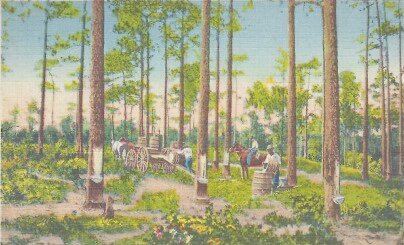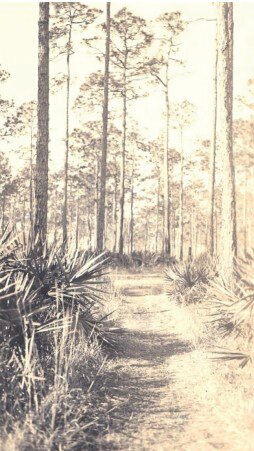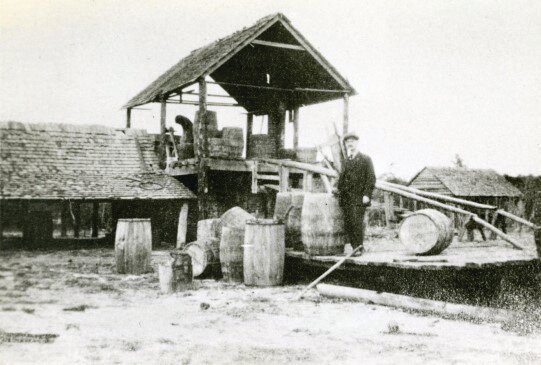Celebrate Clay County History
Belmore State Forest – then and now
CLAY COUNTY – For any lover of the great outdoors, Clay County boasts more than a few attractions sure to satiate an adventurous spirit. According to the Florida Natural Areas Inventory, Clay …
This item is available in full to subscribers.
Attention subscribers
To continue reading, you will need to either log in to your subscriber account, or purchase a new subscription.
If you are a current print subscriber, you can set up a free website account and connect your subscription to it by clicking here.
If you are a digital subscriber with an active, online-only subscription then you already have an account here. Just reset your password if you've not yet logged in to your account on this new site.
Otherwise, click here to view your options for subscribing.
Please log in to continueDon't have an ID?Print subscribersIf you're a print subscriber, but do not yet have an online account, click here to create one. Non-subscribersClick here to see your options for subscribing. Single day passYou also have the option of purchasing 24 hours of access, for $1.00. Click here to purchase a single day pass. |
Celebrate Clay County History
Belmore State Forest – then and now
CLAY COUNTY – For any lover of the great outdoors, Clay County boasts more than a few attractions sure to satiate an adventurous spirit. According to the Florida Natural Areas Inventory, Clay County has 146,630 acres of conservation land, which makes up 38% of the county’s total area.
Many of these conservation and wildlife management areas are open to the public. They are ideal spaces for various recreational activities, such as hiking, biking, swimming, hunting, and camping. However, a lesser-known aspect of these natural gems is that the now-protected areas once provided the resources that were critical in producing some of Clay’s most profitable exports in centuries past.
One such place was Belmore State Forest. Located in the southern portion of Clay County, Belmore is comprised of 12,262 acres of a variety of habitats and ecosystems, with 8,737 acres of that land dedicated to the Belmore Wildlife Management Area.
The general area was once owned and managed by the Belmore Florida Land Company, a business based out of Chicago. The company’s leaders were determined in the late 1800s to make a name for themselves through the success of this property. They planned to create a new city called Belmore City (after the company, of course), and it would be the new hotbed of activity for the county.
The company painted their planned settlement as an authentic slice of paradise and, among many other things, promised unsuspecting Northerners mild weather, a land ripe with citrus and tropical fruits and flowing with the finest quality honey.
As outlandish and exaggerated as these claims may sound, some held at the time, particularly those claims regarding citrus. Orange groves were present in some areas of the county and did generate a profit, although it is unlikely it was pretty as well-paying as advertised.
A series of harsh freezes in the mid-1890s damaged the groves across the county to the degree that they could not recover, which devastated the citrus industry. Ultimately, this event significantly contributed to the downfall of Belmore City and some of the surrounding communities. Not only did the freeze kill citrus and other crops, but also the company’s prospects and dreams.
Contrary to what the Belmore Florida Land Company wanted its potential investors and residents to believe, oranges were not the agricultural crop with the most potential for that area of Clay County. The real wealth of Belmore lay in its abundance of pine forests. Pine trees provided high-quality wood for timber sales and the main ingredients for naval stores, a catch-all term for liquids harvested from pine trees for shipbuilding and maintenance.
It was an extremely profitable industry at the time. Turpentine has often been cited historically as the county’s top agricultural crop. Many sources list the long-leaf yellow pine as the tree of choice in these ventures, as it is supposedly superior to similar trees.
Based on some contemporary maps, we know that there was at least one turpentine still in the Belmore area by 1936, and there was a sawmill there no later than 1885. Perhaps the Belmore Florida Land Company should have marketed their land differently. Still, turpentine and sawmills are not nearly as dreamy and idyllic as acres of fruit trees and orange groves.
The modern-day Belmore State Forest was formed under two land acquisitions – one in 2004 and the other in 2007. The Florida Fish and Wildlife Conservation Commission and the Florida Forest Service, both of which offer additional information about Belmore’s current conservation and forestry efforts on their respective websites, now manage it.
Explore the Clay County Historical Archives Center to access more historical records that offer a fascinating glimpse into our county’s history. Our hours are 8 a.m. to 5 p.m., Monday through Friday (closed holidays). You can find our office inside the Old Jail at 21 Gratio Place in Green Cove Springs.
Residents are encouraged to call us at (904) 371-0027 to make inquiries or to schedule a visit.

















